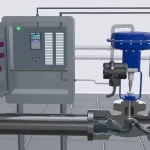As members of the healthcare information technical team, certified medical coders or medical coding specialists carry out the crucial work of transforming the textual material on medical reports into a set of widely recognized numeric codes.
The phrase “universally intelligible and recognized” is highlighted. Health insurance companies can decipher the paperwork medical coders create and disburse payments correctly because they employ a common classification system to assign numeric codes to the diagnostic tests, therapies, and other clinical procedures that are conducted on patients.
Additionally, these records are crucial for doctors and other primary healthcare providers to interact with one another, comprehend the patient’s stage of treatment, leave instructions for the support staff, and perform the appropriate follow-up action.
Here is a step-by-step tutorial on how to become a certified medical coder certification in San Antonio if what you have read thus far sounds even somewhat intriguing to you:
- Educate yourself about the field: In order to make an informed choice, it is wise to gather as much information as you can about the field you are interested in. Find out information about the type of work that certified medical coders do, entry criteria, career prospects, perks and remuneration, opportunities for growth, etc. Spend a lot of time online collecting all the information that might be of use to you. If your future is at stake, nobody will mind if you spend a lot of time in front of a computer.
- Start preparing in high school: If you are still in high school or are about to enter it, it may be a good idea to take math, biology, chemistry, health science, nutrition, and other related subjects to get ready for postsecondary study in medical coding.
- Select a medical coding training program: At this stage, you must decide between a college degree and a medical coding vocational training school. There are advantages and disadvantages to each choice. A vocational training program, for instance, might be more adaptable, more inexpensive, and shorter in length. On the other side, attending college can be expensive but results in a degree after two (or four) years, which is a highly significant piece of paper.
- Finish the coursework: Whichever path you take to become a certified medical coder, be sure you are comfortable with your choice before plunging headfirst into the studies. Medical terminology, physiology, anatomy, the healthcare reimbursement system, various forms of medical records, the coding and categorization system, and other topics are frequently covered in a medical coding curriculum. Your training program should ideally also give you some real-world experience in medical coding.
- Obtain medical coding certification. This is the last step on the road to certification as a medical coder. The criteria for awarding certification vary amongst organizations. Certifications like the Certified Coding Associate (CCA) and Certified Coding Specialist are given by the American Health Information Management Association (AHIMA) (CCS). The American Academy of Professional Coders (AAPC) offers medical coding certificates such as Certified Professional Coder (CPC), Certified Professional Coder – Outpatient Hospital (CPC-H), etc. Learn more about the requirements for the certification you desire, choose a good time to take the exam, pass it, and you’ll be a certified medical coder ready to take on the medical coding industry!
Mother of two who stays at home, Nancy is 36 years old. Before taking a sabbatical to spend more time with her kids, she worked as a medical assistant for five years. Through her writing, she likes to share the essential knowledge she gained working as a medical assistant about the medical billing and coding sector. She frequently discusses medical billing and coding programs in her work. Her depth of knowledge in medical billing and coding training is the result of her thorough research.













